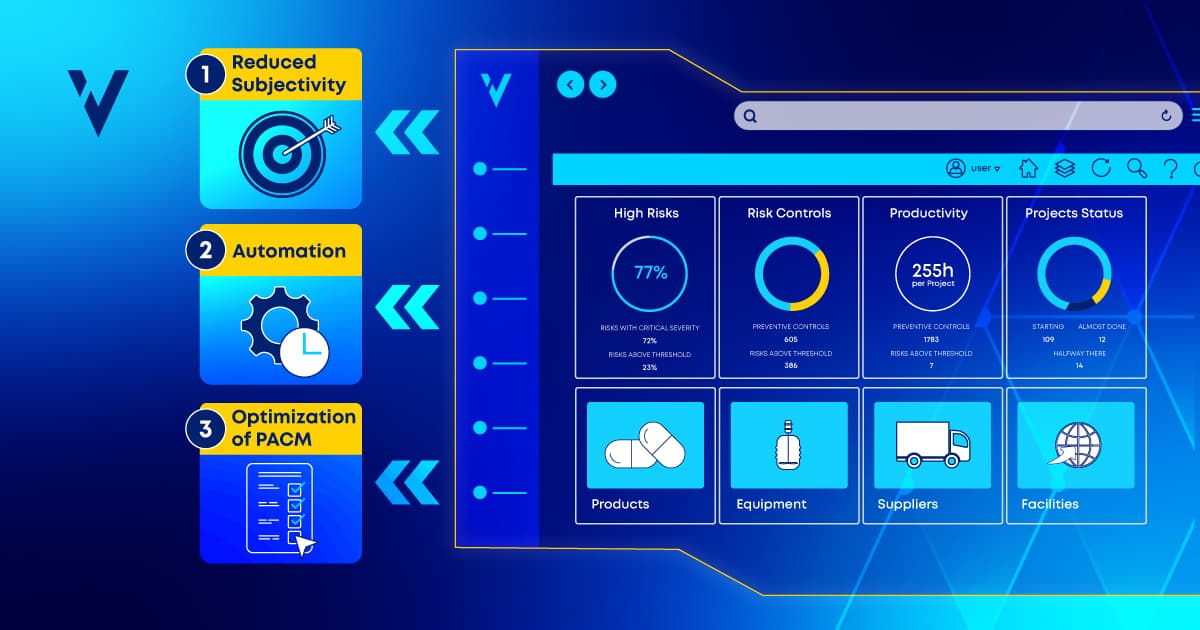Published on July 27, 2023
Reading time: -- minutes
Last updated on June 4, 2024


Integrating process data with risk management can trigger many improvement opportunities and competitive advantages. In this blog post, we’ll look at the three main benefits of doing so, and how this integration can increase the efficiency and competitiveness of your organization.
The first key benefit is the reduction of subjectivity in risk assessments.
As in any other human decision, subjectivity in quality risk management (QRM) can impact the outcome of its activities and the way you conduct the exercise itself. Trying to reduce this impact has been on regulators’ radar in an attempt to increase the robustness of QRM and the established control strategies to ensure product quality and patient safety.
As ICH Q9 (R1) points out, subjectivity cannot be eliminated, but it should be acknowledged and addressed to limit the impact of human bias and behavioral factors when making decisions.
This can be achieved by increasing the sources and amount of available information, data, and science-based knowledge. Applying this knowledge base to risk assessment exercises will decrease the likelihood of user bias.
If you'd like to know more, you can read our blog post about reducing the subjectivity of risk assessments.
Another key benefit of integrating process data with risk management activities is related to the optimization of Post-Approval Change Management (PACM) Protocols. (1)
Having an optimized and streamlined PACM Protocol can have many benefits, such as:
The first step to applying a PACM Protocol requires the submission of the protocol that includes the risk management activities. When you integrate process data with risk management activities, you can perform these risk management activities using a systematic data-driven approach. This results in a more consistent, higher-quality evaluation and decision-making process.
To learn more about integrating risk and process knowledge over the lifecycle, read our Industry Insight: Risk and Data as Knowledge Enablers - a Lifecycle Approach.
If you're curious about ICH Q12 and how to create a PACM Protocol, read this blog post.
To successfully integrate and implement a data-driven QRM process, two essential prerequisites must be met: a digital risk management platform and a digital platform that effectively handles manufacturing process intelligence and can gather data from multiple sources, such as a digital Continued Process Verification (CPV) Plan.
This digital risk management platform should:
ValGenesis offers unparalleled support in this field with our comprehensive digital risk management tool. Additionally, ValGenesis Process Insight simplifies the implementation of digital CPV Plans. Please contact one of our experts to find a solution tailored to your needs.

Learn about the requirements of the Annex 1 revision and how to ensure compliance with a digital risk management platform.
By Ângela Martinho
Read
Learn how to simplify regulatory approval for post-approval changes and discover the benefits of implementing a PACM protocol and using a QRM platform.
By Rui Almeida
Read
In this blog post we'll look into what steps you may need to take to make sure you are compliant with the ICH Q9(R1) guideline.
By Pedro Ferreira
Read